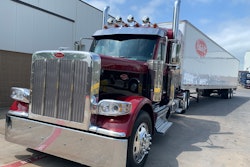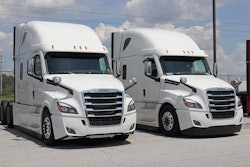Once courtrooms began to re-open following the COVID outbreak last year, one of the first verdicts was against a trucking company. Despite being hailed as heroes in the depths of the pandemic, the verdict topped $52 million.
Just last week, two trucking companies – AJD Business Services and Kahkashan Carrier Inc. of Canada – were hit with a $1 billion verdict in the 2017 wrongful death case of an 18-year-old in Florida, according to First Coast News.
Since 2011, trucking verdicts over $10 million occur about every other month, said Rob Moseley, Founding Partner, Moseley Marcinak Law Group, speaking at the CCJ Symposium in Birmingham, Alabama.
Technology creates data, and Moseley said carriers will be held accountable for knowing what the data says and reacting to it – even if you don't.
"Every time there's another bell or whistle on the truck, there's more data created," he said, adding that data collection systems include the truck's electronic control module (ECM), collision avoidance, roll stability, event recorders, and electronic log, among others. Moseley noted that on a recent accident investigation, he watched as an expert investigator plugged into seven different locations on the truck to retrieve data.
Moseley said it's key that fleets understand what data is being collected by the truck and designate someone to look at it and interpret it.
"You're held legally responsible for what that data shows and for what you should have known about what that data was showing you," he said. "After an accident, one of the first things we do is we download the ECM on your vehicle. For the most part, what I see is very passive management of what's on that ECM. What normally happens is the trip (odometer) that's on the ECM is 300,000 miles or the life of the truck, so you get all of this data about this truck that's been running in your fleet for all of this time and what you see is top speed is 92 miles an hour on February 3. You see all this data that until the accident happens you don't know it's there."







